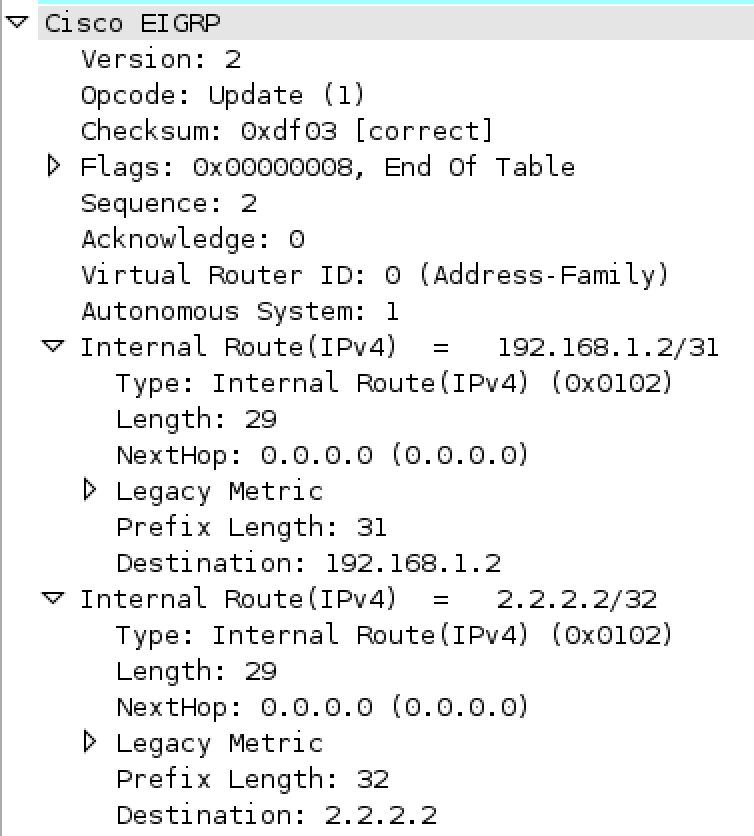Making Friends (EIGRP Style)
Even though EIGRP neighbor relationships are possibly one of the more simple things in networking, I am finding it is still frequently misunderstood. When I was a Lieutenant, I spent a lot of time asking for the Marines to “show me”. In that vein, let’s spend some time seeing what some of those cool things you learn about in CCNA look like.
I captured a link between two GNS3 routers. The capture was started before the network statements (for EIGRP) were applied. I used the following display filter:
On high-speed links (T-1 or faster) hello packets are sent every 5 seconds
EIGRP hello packets are multicast by default
The two quotes above are both verified by the packet capture. If you look at the second column, you can tell that these hello packets are sent (roughly) every 5 seconds. Looking at the fourth column (destination IP address) you can see that EIGRP packets are multicast. Class C addresses are 192-223, where Class D (multicast) is 224-239. Every 5 seconds, Router 1 (192.168.1.0) is sending hello packets our of its FastEthernet interface to the multicast destination reserved for EIGRP (224.0.0.10).
EIGRP neighbor relationships are formed using hello packets.
EIGRP update packets are unicast and contain network advertisements.
From the top picture you can see Router 1 (192.168.1.0) and Router 2 (192.168.1.1) send a hello to the EIGRP multicast address. After the exchange of hellos, the routers turn to unicasting update packets containing the networks they own. Above you can see the entire back and forth, digging a bit deeper, here is what one of those packets look like:
So now that we have seen “what it looks like” when you form a neighbor relationship, what are some of the requirements for a neighbor relationship? An exhaustive list would be difficult, here are a couple of the most common:
- Routers must be in the same ASN to form a neighbor relationship.
- Each router must have a network statement for the physical interface connecting them.
- The subnet mask on the physical interface must be the same for both routers.
- Layer 2 connectivity must be good (in same VLAN, VERY common mistake).
- Layer 1 must be good (check Layer 1, check Layer 1 again). <- Stolen from Kyle.
None of this post is revolutionary or really even new, but I hope it gives you another way to look at it. If you understand the basics of how the neighbor relationships are formed and stick to the rules, you’ll be fine.




